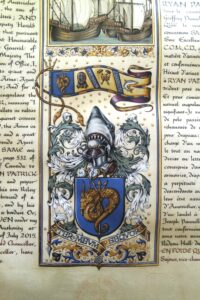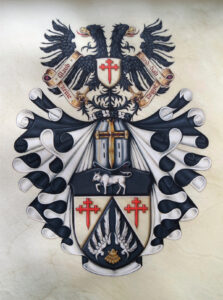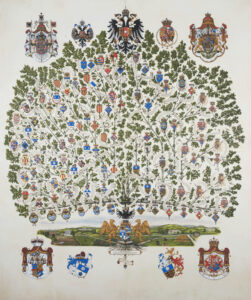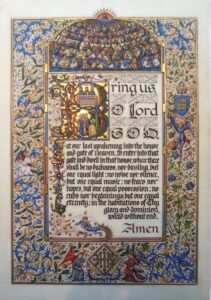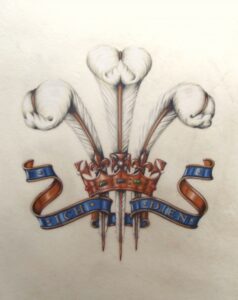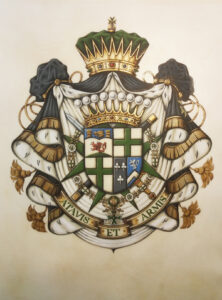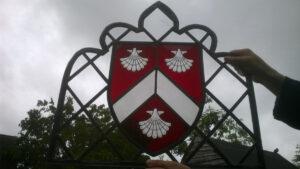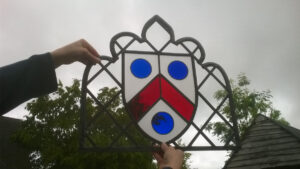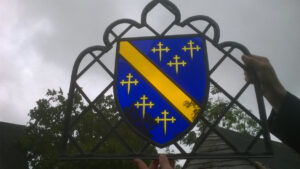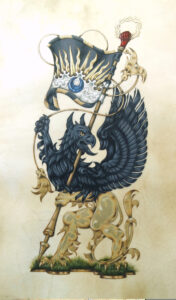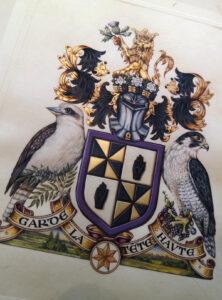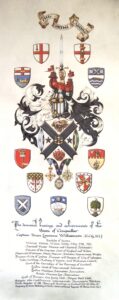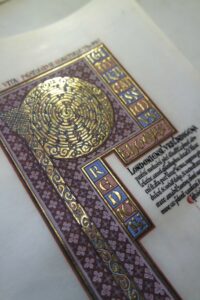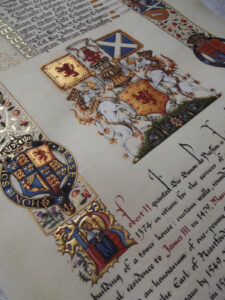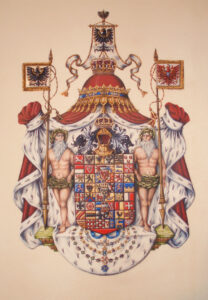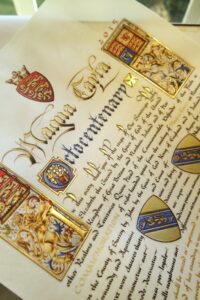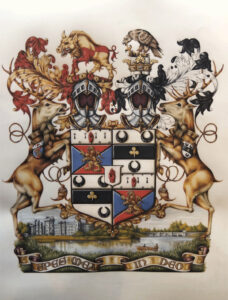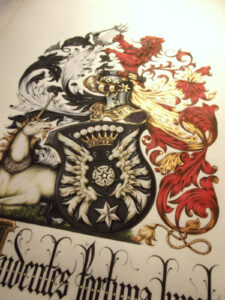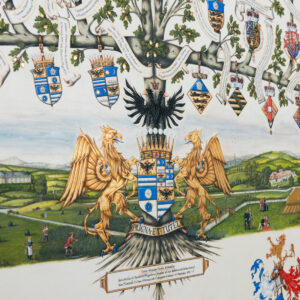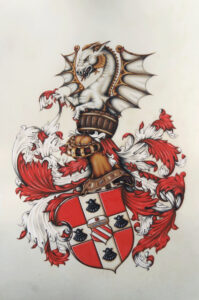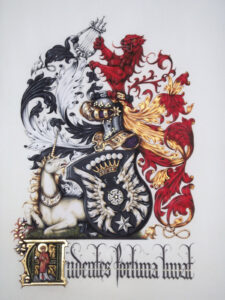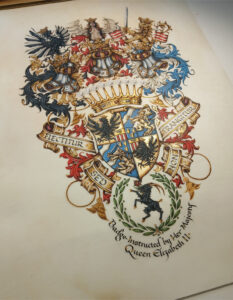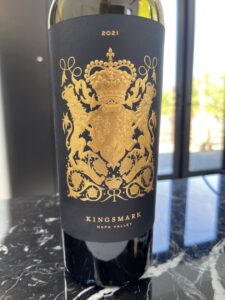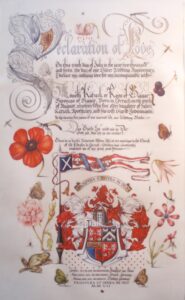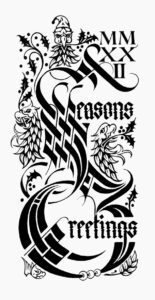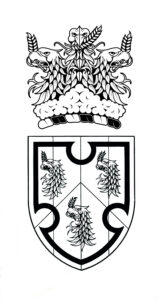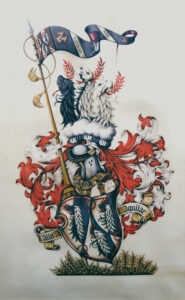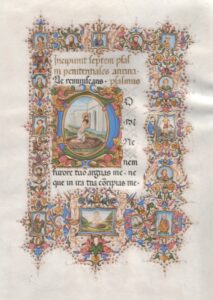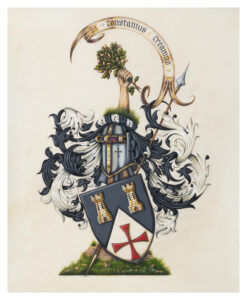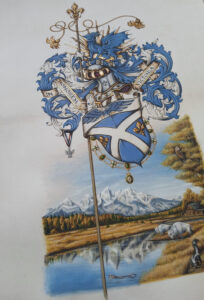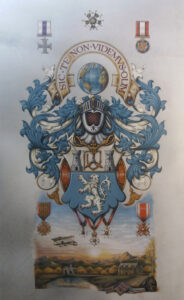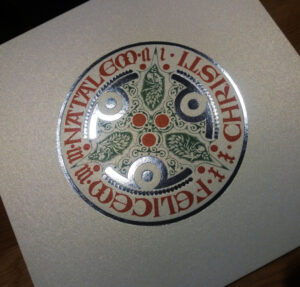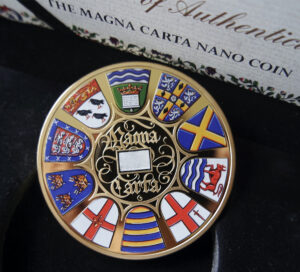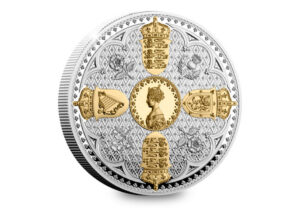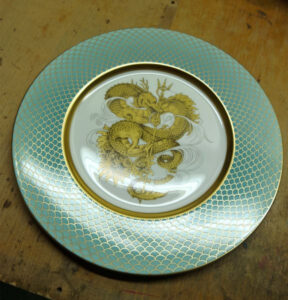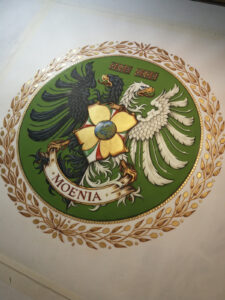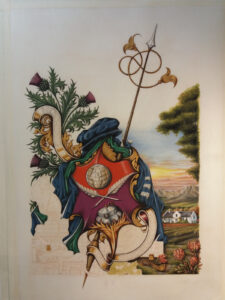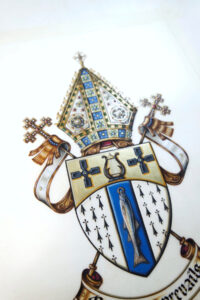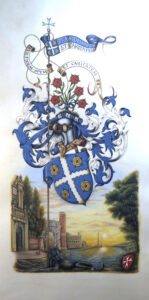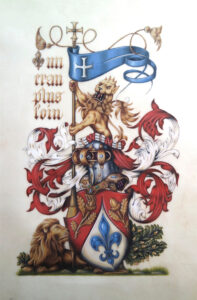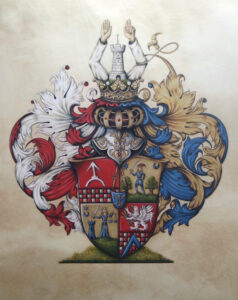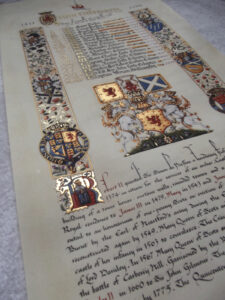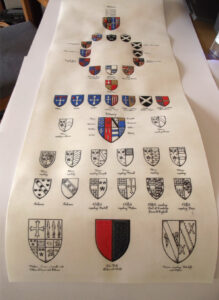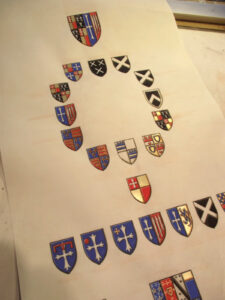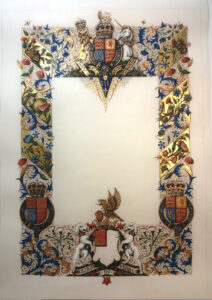FEASTS FOR THE EYES: EVEN MORE ABOUT HERALDIC ARTIST NEIL BROMLEY
Originally appeared in a Supplement to The Armiger’s News, Volume XLVIII, Number 3, Summer 2025
- Why heraldry? Why not focus primarily on some other “genre?”
- Although I trained in Heraldic art, I also trained in Calligraphy and medieval illumination. The combination of all three genres allows me to create highly illuminated Heraldic pages on vellum, with the use of gold leaf and calligraphy to a high standard. All three genres fit together and are all part of the ancient craft of heraldic art.
- Who have been your artistic inspirations (whether heraldic or not)?
- Having trained at Reigate School of art, the course was originally set up by the late Anthony Wood and John Ferguson. These were of course inspirational during our training and so many other great artists have emerged from that course (which is no longer with us). I would have to gain inspiration from Andrew Jamieson who attended, and his work was often seen along with my Tutors, Bernard Summer (Heraldry), Gerald Mynot (Calligraphy), and John Gibbs (Lettering). I have always admired the work of John Ferguson and Anthony Wood and had the pleasure of meeting both.
- Who are your favorite active heraldic artists, and why?
- I am pleased that there are many more talented artists coming through. I do not know all of them as we rarely meet, being such an insular occupation. I have been blessed with meeting Marco Foppoli who remains one of my favourites as he has such a unique style of which I will never be able to create. I also admire Quentin Peacock for his digital use of heraldic art and I do believe there is a place for good quality digital heraldry as it broadens the scope for its use and helps to bring the arty into the 21st century so that this form of art survives. The blend of traditional art and digital art can also work well together.
- What can you say about your experience with the Reigate School?
- Having spent three years previously on Exhibition design courses and a part-time course in Canal Narrow boat folk art, the course was very well suited to all that I had been taught through School and at art college. It was a combination of good technical drawing ability, good design, good art and a historical craft which suited me at the time as CAD was coming into the design courses that I attended, and I did not enjoy the modern process. I had been trained on a drawing board and still prefer the pencil and set square! The course was all course work which I enjoyed, in a very nice leafy green suburb of England, very quiet and laid back which enhanced my work. I was pleased to have won both bursaries from two Worshipful Companies as well as a distinction for the overall course. It was art college, so a great excuse to grow my hair!
- What materials do you regularly use, though I know this can change from project to project?
- My preferred base material is Vellum. This is the ultimate writing and painting surface which allows the paintings to stand out of the page due to its creamy tone. It is nonporous so all inks/paints dry on top of the vellum rather than soaking into the paper. Its durability is incredible and will last over 1000 yrs plus if kept well. I am very privileged to be able to work on such an ancient material but is also just a bi-product of the food industry and I would rather it be made into skins for painting than going to waste. I use Gouache paint and along with Chinese stick ink. The golds are either gold gouache or shell gold which is usually 23c gold dust mixed with gum Arabic. Raised gold is occasionally used with plaster-based gesso and 23c loose Gold leaf for illumination. Other equipment is usually just a 4H pencil and a 0000 paintbrush.
- What is your preferred medium?
- Gilding with gesso and gold leaf!
- What are your thoughts on the rising number of digital heraldists?
- I think as long as they have a good understanding of the art and design of heraldry and an understanding of the craftsmanship behind each Coat of Arms, then I think that here is a place, however many images are so basic and simplified that they have a tendency to become the norm. Having trained for six years at art college and having been in business for the last 25 years creating heraldic art, it is very easy for a digital artist to create an image having not been formally trained. One can see if they have a good understanding of the art of heraldry and they should be recognized for this, but there are many poor images available online that do not represent what we create as Heraldic artists and designers. There is nothing better than something that has been hand designed.
- What would be your top selections for must-have books in any serious heraldry enthusiast’s library?
- Anthony Wood: Heraldic Art and Design
- John Ferguson: The Heraldic Art of John Ferguson
- Elvin’s Dictionary of Heraldry
- Illuminated Manuscripts: Christopher de Hamel
Ex Libris & China & Stained Glass & Badges & Numismatics & Armorial Family Trees & Seals… Neil Bromley’s Hand-Picked Examples of His Own Work*
Select images from a much larger portfolio shown in the original article in The Armiger’s News
* Plus some of the Editor’s favorites – All images courtesy of and Copyright © Neil Bromley and/or the respective Armiger
